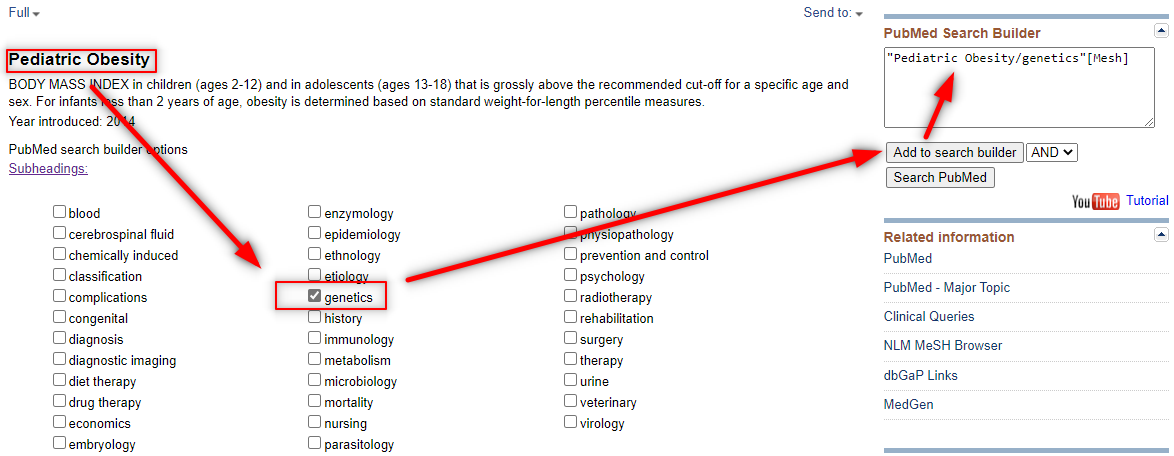PubMed
Many caregivers use PubMed to identify relevant medical literature. It's a free resource offered by the National Library of Medicine that includes more than 35 million references (January 2023) and allows searching in three different databases:
- Medline. Indexes journal articles. Most of them are only available under subscription, although an increasing number of papers are free under an open-access license. St. Charles caregivers can also directly access the full text of those resources the library subscribes to; for other sources, please place a request, and we'll be happy to help.
- PubMed Central (PMC). All the articles indexed on PMC are available for free (see the list of included journals).
- Bookshelf. Indexes and gives access to books and book chapters. Some of the available content is in the public domain, but some are subject to copyright.
MeSH
PubMed allows keyword (free text) searching, in the form of a simple search or in a more advanced way using specific fields, operators, and filters. But it also includes a powerful controlled vocabulary tool called Medical Subject Headings (MeSH) that will help any researcher to take their literature research a step forward:
The Medical Subject Headings (MeSH) thesaurus is a controlled and hierarchically-organized vocabulary produced by the National Library of Medicine. It is used for indexing, cataloging, and searching of biomedical and health-related information. MeSH includes the subject headings appearing in MEDLINE/PubMed, the NLM Catalog, and other NLM databases.
If you want to use MeSH, access the search page and type a topic you are interested in. For example, child obesity. This is not a MeSH term, but the resource is able to take us to the accepted term: pediatric obesity. That page describes the term and gives us some other helpful information. Specially:
- Subheadings or scope terms: if selected, they allow us to look into a specific subset of the term we are exploring. In this case, for example, we could only be interested in literature about genetic factors linked to pediatric obesity.
- Entry terms or cross-references: these are not accepted as subject headings but that the system recognizes them as synonyms or very close in significate.
- Hierarchy: shows where our concept lies within a list of broader and more specific terms. In this case, pediatric obesity does not have any more specific heading that connects to it, but it is connected broadly to two different disease branches where the main categories are Nutritional and metabolic diseases and Pathological conditions: signs and symptoms. We can navigate those links if we want to refocus our approach to be more broad or more specific.
Once we have a clear idea of what we want to include in the search, we can select it and press the "Add to search builder" button on the right part of the screen. This will add our concepts to the search field. In this case, if we look for genetic factors in pediatric obesity, the result would be this: "Pediatric Obesity/genetics"[Mesh].

If we want to include more subject headings, we can repeat the process and add the new terms to the search builder using the boolean operators that better suit our needs. After that, we will click "Search PubMed," and the system will take us there, where we will have a results page that we can then improve by applying filters.
Let's say we want to retrieve a recent systematic review in our example. We would select the relevant options in the left sidebar: "Systematic Review" and "5 years". Here is the result, and here a document that seems very relevant to us:
- Campbell ET, Franks AT, Joseph PV. Adolescent obesity in the past decade: A systematic review of genetics and determinants of food choice. J Am Assoc Nurse Pract. 2019;31(6):344-351. doi:10.1097/JXX.0000000000000154
It turns out that the Journal of the American Association of Nurse Practitioners is included in PMC, so lucky us... we can get the full text for free!
If you need helps using PubMed or MeSH, please contact the Medical Library.




